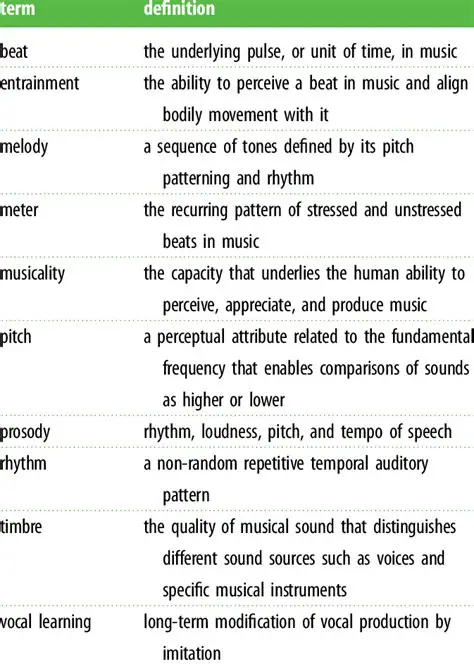Introduction

Music theory is the study of the principles underlying music. It provides a framework for understanding and analyzing musical compositions, as well as creating and performing new ones. From the building blocks of melody and harmony to the complexities of musical form, music theory offers a comprehensive understanding of this universal language.
Key Concepts of Rhythm and Meter
Rhythm refers to the arrangement of sounds in a specific order and duration. It creates a sense of motion and flow in music. Tempo indicates the speed at which music is played, measured in beats per minute (BPM). Meter organizes rhythmic patterns into regular groups called measures, each containing a specific number of beats. For example, 4/4 time has four beats per measure, with a strong accent on the first beat.
Understanding Pitch and Harmony
Pitch refers to the highness or lowness of a sound. It is determined by the frequency of the sound waves and is measured in hertz (Hz). Harmony involves the combination of different pitches played simultaneously. When harmonious pitches are played together, they create pleasing and consonant sounds. Dissonance, on the other hand, occurs when pitches clash or create tension, adding interest and variety to music.
Table 1: Basic Musical Intervals
| Interval | Description | Number of Half Steps |
|---|---|---|
| Unison | Same pitch | 0 |
| Minor Second | Slightly lower pitch | 1 |
| Major Second | Slightly higher pitch | 2 |
| Minor Third | Two half steps below a major third | 3 |
| Major Third | Three half steps above a minor third | 4 |
| Perfect Fourth | Five half steps | 5 |
| Augmented Fourth | Six half steps | 6 |
| Perfect Fifth | Seven half steps | 7 |
| Minor Sixth | Eight half steps | 8 |
| Major Sixth | Nine half steps | 9 |
| Minor Seventh | Ten half steps | 10 |
| Major Seventh | Eleven half steps | 11 |
| Octave | Same pitch, eight degrees higher | 12 |
Melody: The Rise and Fall of Pitches
Melody is a succession of pitches played over time. It creates a recognizable and memorable tune. Intervals refer to the distance between two pitches, measured in half steps. Melodic contours describe the shape and direction of a melody, such as rising, falling, or arching. Motives are short melodic fragments that can be repeated and developed throughout a piece.
Harmony: The Interplay of Pitches
Harmony is the combination of multiple pitches played simultaneously. Chords are groups of notes played together, creating a specific sound. Triads are chords consisting of three notes, usually the root, third, and fifth. Inversions occur when the order of the notes in a chord is changed, altering its sound and function.
Musical Form: Structure and Organization
Musical form refers to the way in which different sections of music are organized and connected. Binary form divides music into two contrasting sections (AB). Ternary form has three sections (ABA), with a return to the original theme. Sonata form is a complex form used in classical music, consisting of an exposition, development, and recapitulation.
Embracing Music Theory in Practice
Music theory provides musicians with a powerful toolset for understanding, creating, and performing music. It allows them to:
- Analyze musical compositions: Understand the structure, harmony, and development of existing pieces.
- Create new music: Use theoretical principles to generate original melodies, harmonies, and forms.
- Improve performance: Develop a deeper understanding of the music they play, leading to more expressive and nuanced performances.
Applications of Music Theory in the Real World
Music theory has numerous applications in the real world, including:
- Music Education: Provides a structured framework for teaching and learning music at all levels.
- Music Therapy: Helps therapists use music to improve the physical, emotional, and cognitive well-being of individuals.
- Music Production: Enables producers to understand and manipulate musical elements for optimal sound quality and aesthetics.
- Music Analysis: Allows scholars to study and interpret musical compositions from historical and cultural perspectives.
Frequently Asked Questions
1. Is music theory essential for musicians?
Yes, music theory provides a solid foundation for understanding, creating, and performing music effectively.
2. How long does it take to learn music theory?
The time required to learn music theory varies depending on individual abilities and the depth of knowledge desired.
3. Can I learn music theory without a teacher?
It is possible to learn music theory independently using textbooks, online resources, and self-study materials.
4. What instruments can benefit from music theory?
All musical instruments can benefit from an understanding of music theory, as it provides a universal language for describing and manipulating sound.
5. How can music theory improve my musicianship?
Music theory helps musicians develop their ears, improve their understanding of music, and expand their creative capabilities.
6. What are some tips for learning music theory?
Start with the basics, practice regularly, listen to music attentively, and don’t be afraid to ask for help.
Conclusion
Music theory is the cornerstone of musical expression, providing a framework for understanding, analyzing, and creating music. By embracing its principles, musicians can unlock their full potential and contribute to the rich tapestry of human creativity.
